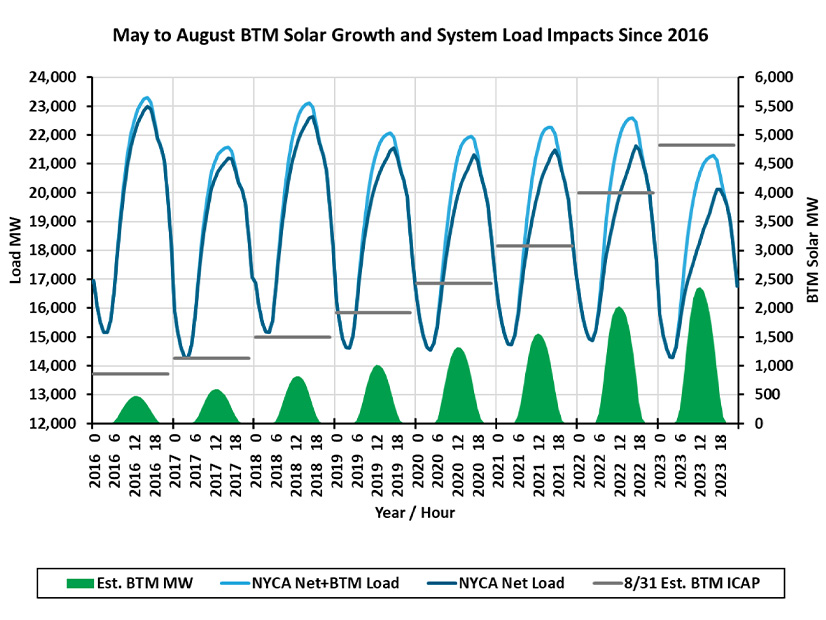Comprehensive Reliability Plan
The NYISO Operating Committee on Wednesday voted to recommend that the Management Committee approve the draft annual Comprehensive Reliability Plan, which reported no “actionable” long-term reliability issues but noted narrowing reliability margins.
The report also reinforced findings from the ISO’s second-quarter short-term reliability report, which identified a shortfall in New York City that needs to be addressed by summer 2025. (See NYISO Addresses NYC Near-Term Reliability Need.)
NYISO noted that the CRP also shows fossil fuel generator retirements are outpacing the addition of renewable resources. That threatens future reliability, which has become increasingly reliant on the timely completion of transmission projects like the Champlain Hudson Power Express.
“Without the CHPE project in service or other offsetting changes or solutions, the reliability margins would be deficient for the 10-year planning horizon,” NYISO said in its presentation of the draft.
The report also stressed the need for more state investment and research into dispatchable, emissions-free resources, which will be needed to serve future loads at times when intermittent resources cannot produce enough energy because of poor weather.
Summer Operations
Aaron Markham, NYISO vice president of operations, discussed the impact of three summer heat waves on the ISO’s operations, noting how solar resources are becoming increasingly important as peaker unit retirements reduce surplus capacity and solar production shifts peak load times.
“It was a cool, wet summer, but from a capacity perspective, we definitely observed less surplus in real time due to retirement of the peaker units,” Markham said. “We also continue to see the net load peaks shift to later in the afternoon due to the addition of behind-the-meter solar resources.”
Markham also highlighted how the summer’s historic Canadian wildfires that blanketed the East Coast reduced solar production by about 1,446 MW. (See RTOs Report Diminished Solar Output, Loads as Wildfire Smoke Passes.)
Markham noted that although the heat waves required no emergency actions, they underscore the pressures on New York’s grid as it transitions to more weather-dependent energy resources and the importance of public policy transmission projects to alleviate bottlenecks.
Interconnection & Transmission
Thinh Nguyen, NYISO senior manager of interconnection projects, updated stakeholders about proposed tariff revisions that the OC recommended last year but that were not brought before the MC. (See “Interconnection & Transmission,” NYISO Operating Committee Briefs: Dec. 15, 2022.)
The revisions are intended to improve coordination between NYISO’s interconnection and transmission expansion studies. They would, among other things, revise the criteria for what transmission projects are included in study assumptions and account for generators that are outside of the ISO’s interconnection procedures but are included in state agencies’ own processes.
While the OC gave its approval in December, the ISO held off on presenting the revisions to the MC while it waited to see how FERC would rule on a proposal by transmission owners to clarify their ability to exercise a right of first refusal for public policy transmission network upgrade facility upgrades. (See NY TOs Seek Clarification on ROFR for Upgrades.) The commission approved that proposal in April.
The revisions were further held up by FERC’s Order 2023. The ISO told the committee it has determined the order’s directives do not conflict with the revisions.
NYISO will present the revisions to the MC for approval Oct. 25.
September Operations Report
Markham also informed the OC that September saw the summer’s peak load of 30,206 MW, short of the record, 33,956 MW, set in 2019.
The ISO has added 20 MW of energy storage and 60 MW of behind-the-meter solar resources since August.

